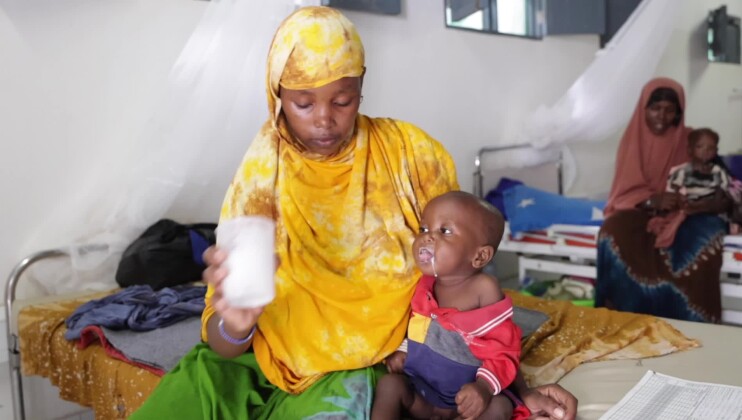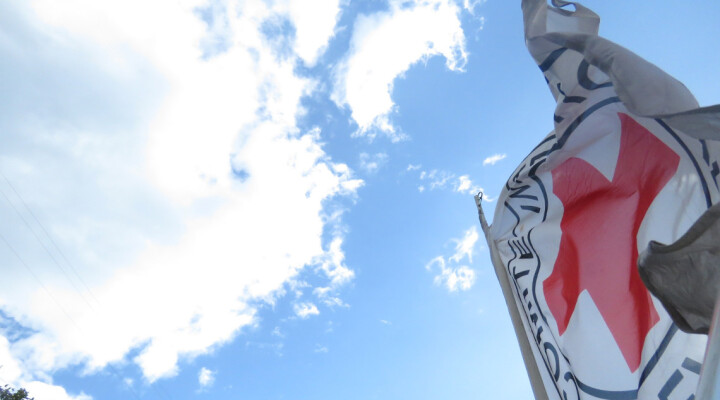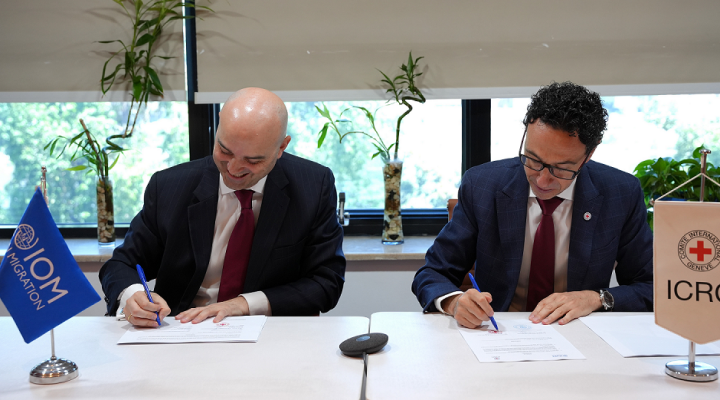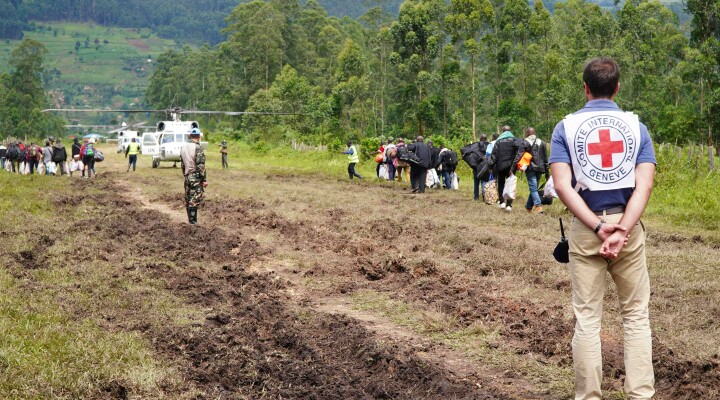Kenya: Worsening climate shocks exacerbate food shortages
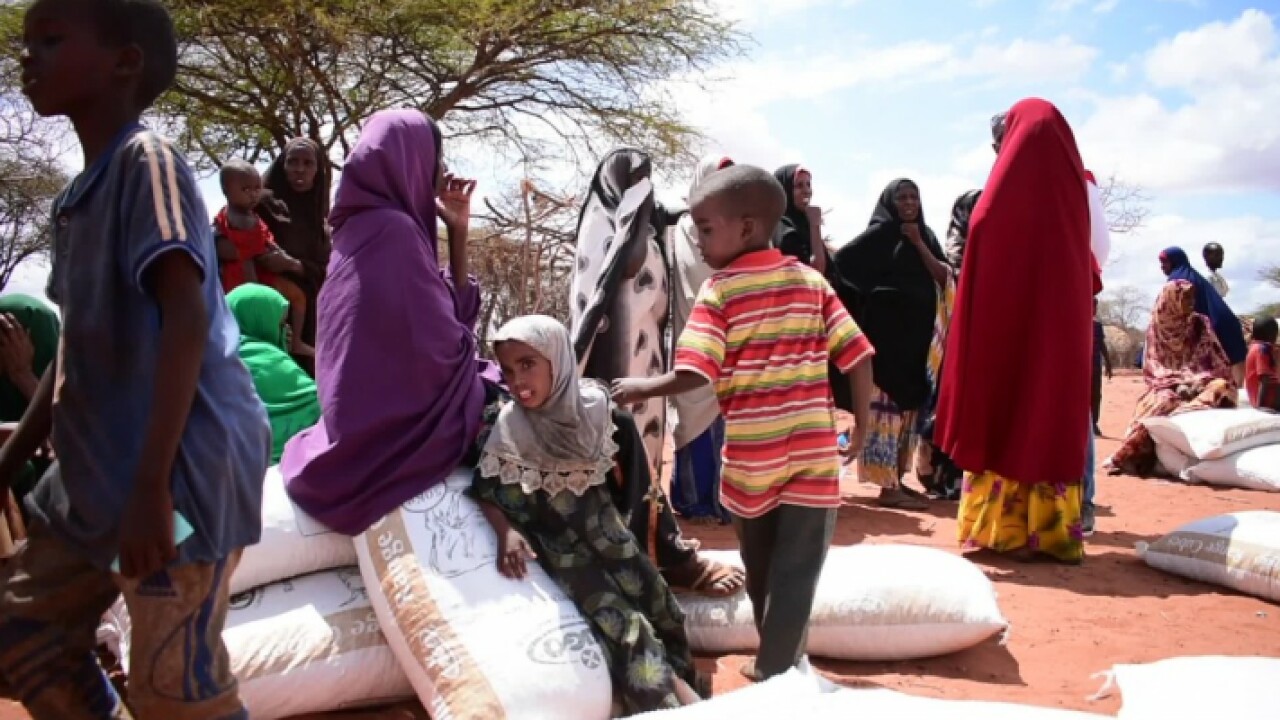
This is a modal window.
Millions of Kenyans do not have enough to eat amid the worsening drought, and a growing number of people have been losing their livelihoods to extreme weather. “We don’t have markets where we can buy food and we don’t have farms. The only income we have is our livestock and we have lost that,” says Mohammed Noor Afey, a community leader in Garissa, Kenya.
In recent years, rainfed agriculture in the Horn of Africa has been crippled by the lack of rains. Now, livestock, one of the key livelihood sectors, has also been severely affected by climate shocks, which have become more frequent and severe. “Rainfall patterns are highly decreasing and the temperatures increasing. This means that even the water pans we have will not harvest enough water,” says Samuel Odhiambo, Garissa County Director of Kenya Meteorological Services.
A shortage of water and food for livestock has pushed many people to leave their homes. “For the last three years, there has not been a single drop of rain. All these houses have been abandoned by their people. Few of us have remained here,” says Dubey Ibrahim Werar, a resident in Garissa. Extended migration creates additional stress for the livestock, making animals more vulnerable to diseases.
Staple food prices have reached a five-year high, while animal prices and daily wages continue to plummet. Deteriorating purchasing power led to rising rates of malnutrition among the most vulnerable communities, who have limited access to a healthy diet and health care.
Droughts are slow-onset emergencies, and meteorological forecasts for the Horn of Africa remain pessimistic. “The meteorology department are saying we are expecting below average rainfall in the coming season, so that means we are going to have a lot of issues in terms of animal body condition deteriorating,” says Mohammed Dubow Aden, Garissa County Coordinator, Kenya Red Cross.
The International Committee of the Red Cross is working together with Kenyan Red Cross Society to help communities build resilience in the face of the erratic weather patterns. The two organization have been distributing relief food and animal feed in four drought-affected counties. 12,000 people received food and over 30,000 received livestock feed. At the same time 2,000 households will receive cash support for three months.
SHOTLIST
Location: Garissa, Kenya
Camera/Editor: Eric Chege
Filming Date: 28th June to 01st July 2022
Length: 9.37
Copyright: ICRC access all
On Screen Credit: ICRC written or logo attached to story
Copyright: ICRC access all
On Screen Credit: ICRC or logo
00:00 – 00:43
Various shots of livestock carcasses.
00:44 – 01:37
Soundbite: Dubey Ibrahim Werar - Resident – Garissa, Kenya
“I am 78 years old. I have not seen a severe drought like this in all my life. For the last three years, there has not been a single drop of rain. Even you can see how things are looking here, all these houses have been abandoned by their people. Few of us have remained here. People come to visit us asking how we are doing; we haven’t seen a dire situation than this one before. When the drought happened, everyone who was running a shop sold everything to buy hay and maize for their livestock. Whenever we go to them, they tell us they have nothing to give us since they sold everything to cater for the animals”
01:38 – 01:54
Various exterior shots of a homestead.
01:55 – 02:06
Various interior shots of a homestead.
02:07 - 02:17
Various shots of children.
02:18 - 02:33
Various portrait shot of an elderly man.
02:34 – 04:02
Soundbite: Mohammed Noor Afey – Community Elder - Garissa, Kenya
“The drought has really affected our livestock as we have lost quite substantial number of livestock for the past three years and this has taken away our economic lifeline, we have not received rain for the last three years and communities are using water vendor as means of survival, our animals have migrated to Habaswein. What Is left here are people with no livestock. The only person who can afford to buy something is the one with livestock nearby through selling his or her livestock. We don’t have markets where we can buy food and we don’t have farms. The only income we have is our livestock and we’ve lost that.
04:03 – 04:34
Various shots of women searching for water in Garissa, Kenya.
04:35 – 05:27
Soundbite: Mohammed Dubow Aden – Garissa County Coordinator, Kenya Red Cross
“Currently what is happening is that after the communities have lost their livelihood, there is mushrooming of villages along the highways especially Dadaab, Balambala and Lagdera highways. Between June last year to June this year, most people have lost around 80% of their livestock, whether they are goats or cattle. That means that many people are currently jobless, they are doing nothing. A new thing has emerged where people are stealing from each other, they are selling other people’s cattle and camels around the refugee camps, that is a new thing that is emerging because of the drought. It is a negative coping mechanism for the community.”
05:28 – 05:46
Various shots of empty water pans.
05:47 – 06:05
Various shots of livestock looking for pasture.
06:06 – 06:46
Soundbite: Samuel Odhiambo – Garissa County Director, Kenya Meteorological Services
“Looking at the trends, rainfall patterns are highly decreasing and the temperatures increasing. This means that even the water pans we have will not harvest enough water. The second thing, if you are talking of the effect on children, most of their families have shifted from their usual households in search of pasture meaning that as time goes by households are going to be affected, based on the type of rainfall we are having verses the long term mean which is highly depreciating and depressed.”
06:47 – 07:16
Various shots of Kenya Red Cross volunteers offloading livestock feeds for distribution.
07:17 – 08:12
Soundbite: Abdirahman Maalim – Head of Mombasa Office, ICRC
“To summarize on the main needs currently is water, pasture, and food. In reference to that, we have responded in two folds. One is to build the resilience of the community by giving them food that will be enough for their daily caloric needs. Secondly, we have also factored their livelihood. We are also providing them with animal feeds which we call them range cubes. These are nutritious supplements to support animals whose body condition has been compromised by the drought. We are also providing cash transfers to some of the most vulnerable communities, which is also to cushion them from this drought.”
08:13 – 08:43
Various shots of Kenya Red Cross volunteers distributing livestock feeds to communities in Garissa, Kenya.
08:44 – 09:33
Soundbite: Mohammed Dubow Aden – Garissa County Coordinator, Kenya Red Cross
“The intervention I will stress on is livestock feeds. We have only catered for 1,154 households and I am sure we have more than 100,000 animals that their body condition is deteriorating. The meteorology department are saying we are expecting below average rainfall in the coming season, so that means we are going to have a lot of issues in terms of animal body condition deteriorating. My appeal to ICRC is that we need to scale up the relief food, cash transfers and livestock feeds.”
Ends
